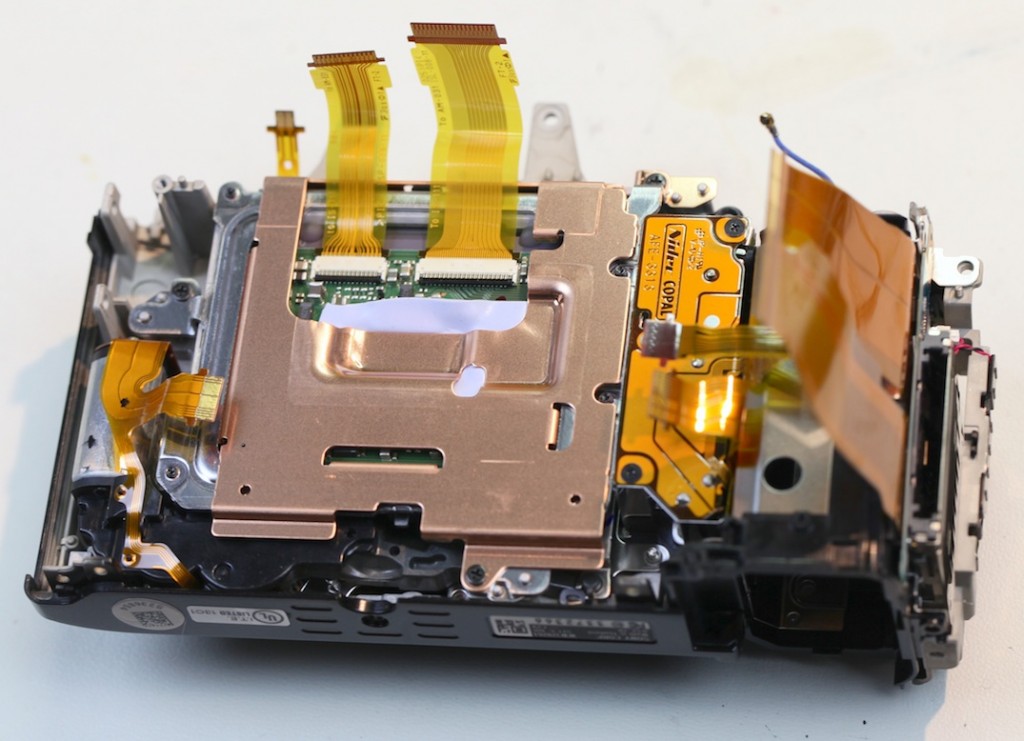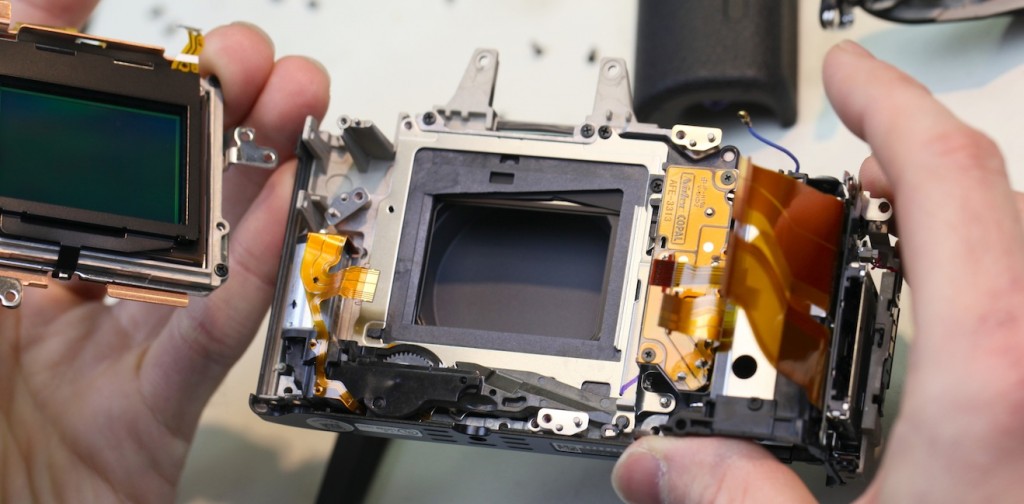Reading mode:
Install the app
How to install the app on iOS
Follow along with the video below to see how to install our site as a web app on your home screen.
Note: This feature may not be available in some browsers.
-
Welcome to the new forums! Please read this first. For known issues we are working to resolve, click here.
You are using an out of date browser. It may not display this or other websites correctly.
You should upgrade or use an alternative browser.
You should upgrade or use an alternative browser.
Can't find it. See post right above this in threaded view for probable explanation.Great, thanks! Could you post the camera ambient temp too from the EXIF?Here you go:Can you compare the EXIF temps from the raws of the A7rII and A7r? It would be interesting to see if the A7rII sensor is more sensitive to heat than the A7r or if it just gets warmer. You'd probably only need to compare the temp of the final raw from each body (worst).Self heating is not as much of a problem with the a7R for sequences of 30-secnod exposures. Vertical scale is the same as for the a7RII 30 second exposure graph.
Jim
--
http://blog.kasson.com
Jim
--
http://blog.kasson.com
Last edited:
Iliah Borg
Forum Pro
It begs for an additional explanation of what is the cause of differences in channel behavior?A reader posted a possible explanation on my blog:
http://blog.kasson.com/?p=11487#comments
If that's the case, we should see interesting differences between the a7 and a7II.
A reader posted a possible explanation on my blog:
http://blog.kasson.com/?p=11487#comments
If that's the case, we should see interesting differences between the a7 and a7II.
Jim
My experience with BSI sensors is..
1) they tend to run hotter but can be easier to cool. (We use peltier coolers..)
2) they tend to have a much higher defect rate.
3) They tend to have more hot pixels... (this also goes with the defect rate and hot spots.)
1) they tend to run hotter but can be easier to cool. (We use peltier coolers..)
2) they tend to have a much higher defect rate.
3) They tend to have more hot pixels... (this also goes with the defect rate and hot spots.)
I don't know of a single, universal, definition for "hot pixels", so I'll make one up and then answer your question based on my definition. If you have a different definition, let me know what it is.Thanks for your continued time and effort on these investigations.JimKasson wrote:
I stopped the lens down to f/22 and firmly affixed the lens cap. I made 101 exposures.
...
and at the end:
I'm curious why the Max readings are uniformly overexposed for all RGBG channels ... both at the start and at the end. Would this be "hot pixels"?
To my way of thinking, hot pixels are ones that are way brighter than they should be, but not stuck at fullscale for all exposures -- I'd call that last group "stuck pixels", and they should get mapped out by the camera's internal software, but sometimes aren't. In a camera that fits the standard model, read noise is Gaussian, and therefore pixels that are brighter than, say, four standard deviations should be extremely rare. In many real cameras, for long exposures, they're not as rare as they should be, indicating that the distribution isn't really Gaussian.
If we define a hot pixel as one whose value varies with exposure and is greater than the four sigma value in a dark-field image, what we're seeing here are hot pixels, since that threshold translates in this exposure to an ADC count of about 1100 or 1200.
What causes long-exposure hot pixels? One common cause is photodiodes with exceptionally large leakage currents, so that they gain electrons more rapidly than their brethern even with no photons falling on them. This effect is called "dark current", and its units are micro or nano amperes -- the number of electrons at the end of the exposure divided by the length of the exposure, then divided by the number of electrons in a Coulomb, then multiplied by a miliion (to get ua) or a billion (to get na).
Jim
--
http://blog.kasson.com
Last edited:
Slaginfected
Leading Member
- Messages
- 693
- Solutions
- 1
- Reaction score
- 339
Might actually be a combination of the two. Thing is, the stabilization system keeps the sensor block floating (more or less), which means the heat has to jump over a gap of air instead of being directly coupled to the other parts of the camera. The other thing is how much heat is generated and how the sensor reacts to that (as you have outlined). I doubt low power usage was one of the main design goals, more like an upper technical limitation.
In the test I did at 1/125 second that I posted in this thread, the self heating effects were negligible, even at ISO 3200, which is not a common setting for a pano. What's the longest exposure you use for a pano?I wonder if this could be a particular problem for large panos. I often take panos that involve 14 to 16+ captures, even with a uwa 14mm. Interiors with windows tend to have very high contrast, so 42 captures isn't unusual (2 rows of 7 with HDRx3).Thanks for clarification. 3-4 stops for 18% card is significant. This leads to a troubling issue that causes unreliability in image quality, e.g. for the same scene and the same exposure setting, you could get different results depending on how long sensor has been functioning (how hot it is).
I have not found an exposure effect here. The pano software that I use, AutoPano, is very good about blending different exposures, to the point where I often do panos with the camera picking the exposure to get more noise-free detail in the dark foreground.With panos, you really want even exposure to match so the image pairs blend ok. With 360 degree FOV panos, the first capture and last capture are typically next to each other.
Again, exposure doesn't change much -- only a few ADC counts -- and at least one pano program is good at dealing with that if and when it does occur.With multiple row panos, you might go left to right relatively quickly for the top row, then do the next row. Seems like there could be problems to blend the rows if the sensor had heated up excessively. Or not?
I view this as mainly a problem for astrophotographers. It appears that this might not be a good camera for them, especially when the self-heating is combined with the 12-bit, spatial-filtering bulb mode.
Jim
Based on Roger's teardown of the A7r, the sensor assembly makes only contact with the body with just a few shim screws (link):A reader posted a possible explanation on my blog:
http://blog.kasson.com/?p=11487#comments
If that's the case, we should see interesting differences between the a7 and a7II.
Jim
--
http://blog.kasson.com


Doesn't look much different with respect to thermal conduction to the body vs the IBIS assembly of the A7II, except if there's no heat sink making contact behind the A7II/A7rII - it's not clear from these photos of the A7II assembly:


Last edited:
Thanks for the pix.
I'll see if I can do an a7/a7II test. And I thought I was done with this.
Jim
I'll see if I can do an a7/a7II test. And I thought I was done with this.
Jim
D
Daniel Lauring
Guest
That is a big copper heat sink on the back of the A7r sensor. Wonder if the A7r2 has less sink because it needs to move the assembly.Based on Roger's teardown of the A7r, the sensor assembly makes only contact with the body with just a few shim screws (link):A reader posted a possible explanation on my blog:
http://blog.kasson.com/?p=11487#comments
If that's the case, we should see interesting differences between the a7 and a7II.
Jim
--
http://blog.kasson.com

Doesn't look much different with respect to thermal conduction to the body vs the IBIS assembly of the A7II, except if there's no heat sink making contact behind the A7II/A7rII - it's not clear from these photos of the A7II assembly:
Last edited:
exiftool finds it in the A7rII EXIF. Can you give it a try?Can't find it. See post right above this in threaded view for probable explanation.Great, thanks! Could you post the camera ambient temp too from the EXIF?Here you go:Can you compare the EXIF temps from the raws of the A7rII and A7r? It would be interesting to see if the A7rII sensor is more sensitive to heat than the A7r or if it just gets warmer. You'd probably only need to compare the temp of the final raw from each body (worst).Self heating is not as much of a problem with the a7R for sequences of 30-secnod exposures. Vertical scale is the same as for the a7RII 30 second exposure graph.
Jim
--
http://blog.kasson.com
Jim
Last edited:
Still can't find it. Where is it?exiftool finds it in the A7rII EXIF. Can you give it a try?Can't find it. See post right above this in threaded view for probable explanation.Great, thanks! Could you post the camera ambient temp too from the EXIF?Here you go:Can you compare the EXIF temps from the raws of the A7rII and A7r? It would be interesting to see if the A7rII sensor is more sensitive to heat than the A7r or if it just gets warmer. You'd probably only need to compare the temp of the final raw from each body (worst).Self heating is not as much of a problem with the a7R for sequences of 30-secnod exposures. Vertical scale is the same as for the a7RII 30 second exposure graph.
Jim
--
http://blog.kasson.com
Jim
Jim
--
the last word the last word - Photography meets digital computer technology. Photography wins -- most of the time.
Photography meets digital computer technology. Photography wins -- most of the time.
 blog.kasson.com
blog.kasson.com
It reports it as "Ambient Temperature" in a sample A7riii raw I got online.Still can't find it. Where is it?exiftool finds it in the A7rII EXIF. Can you give it a try?Can't find it. See post right above this in threaded view for probable explanation.Great, thanks! Could you post the camera ambient temp too from the EXIF?Here you go:Can you compare the EXIF temps from the raws of the A7rII and A7r? It would be interesting to see if the A7rII sensor is more sensitive to heat than the A7r or if it just gets warmer. You'd probably only need to compare the temp of the final raw from each body (worst).Self heating is not as much of a problem with the a7R for sequences of 30-secnod exposures. Vertical scale is the same as for the a7RII 30 second exposure graph.
Jim
--
http://blog.kasson.com
Jim
Jim
--
http://blog.kasson.com
How far down the list? A search for "temperature" in RD 1.1.7 using Exiftool version 9.99 only gets two hits, color and battery. What lens was used for the sample EXIF you looked at? That lens may be reporting ambient temperature. I did the testing with the 70-200 G FE.It reports it as "Ambient Temperature" in a sample A7riii raw I got online.Still can't find it. Where is it?exiftool finds it in the A7rII EXIF. Can you give it a try?Can't find it. See post right above this in threaded view for probable explanation.Great, thanks! Could you post the camera ambient temp too from the EXIF?Here you go:Can you compare the EXIF temps from the raws of the A7rII and A7r? It would be interesting to see if the A7rII sensor is more sensitive to heat than the A7r or if it just gets warmer. You'd probably only need to compare the temp of the final raw from each body (worst).Self heating is not as much of a problem with the a7R for sequences of 30-secnod exposures. Vertical scale is the same as for the a7RII 30 second exposure graph.
Jim
--
http://blog.kasson.com
Jim
Jim
--
http://blog.kasson.com
Jim
--
the last word the last word - Photography meets digital computer technology. Photography wins -- most of the time.
Photography meets digital computer technology. Photography wins -- most of the time.
 blog.kasson.com
blog.kasson.com
You'll need a lens like FE 35mm f1.4 ZA with a temperature sensor inside the lens. See this: http://www.dpreview.com/forums/post/56325040How far down the list? A search for "temperature" in RD 1.1.7 using Exiftool version 9.99 only gets two hits, color and battery. What lens was used for the sample EXIF you looked at? That lens may be reporting ambient temperature. I did the testing with the 70-200 G FE.It reports it as "Ambient Temperature" in a sample A7riii raw I got online.Still can't find it. Where is it?exiftool finds it in the A7rII EXIF. Can you give it a try?Can't find it. See post right above this in threaded view for probable explanation.Great, thanks! Could you post the camera ambient temp too from the EXIF?Here you go:Can you compare the EXIF temps from the raws of the A7rII and A7r? It would be interesting to see if the A7rII sensor is more sensitive to heat than the A7r or if it just gets warmer. You'd probably only need to compare the temp of the final raw from each body (worst).Self heating is not as much of a problem with the a7R for sequences of 30-secnod exposures. Vertical scale is the same as for the a7RII 30 second exposure graph.
Jim
--
http://blog.kasson.com
Jim
Jim
--
http://blog.kasson.com
Jim
--
http://blog.kasson.com
Last edited:
Could it be the BSI - moving the wiring-layer behind the photodiodes?
A conventional sensor with wiring above the photodiodes, may possibly cool more readily.
BSI could be like putting a pan on a cooker - the heat has to dissipate through the pan /the photodiodes.
A conventional sensor with wiring above the photodiodes, may possibly cool more readily.
BSI could be like putting a pan on a cooker - the heat has to dissipate through the pan /the photodiodes.
Silicon is a pretty good thermal conductor, and the lapped chip (I call it lapping; I don't know how they really thin the chip) is very thin.Could it be the BSI - moving the wiring-layer behind the photodiodes?
A conventional sensor with wiring above the photodiodes, may possibly cool more readily.
BSI could be like putting a pan on a cooker - the heat has to dissipate through the pan /the photodiodes.
Loading…
en.wikipedia.org
Loading…
www.electronics-cooling.com
Jim
Might be, and only certain lenses rather than just native vs adapted. I just checked a bunch of A7rII files and the only ones I have which include the ambient had the following lenses. I'm sure there are others:You'll need a lens like FE 35mm f1.4 ZA with a temperature sensor inside the lens. See this: http://www.dpreview.com/forums/post/56325040How far down the list? A search for "temperature" in RD 1.1.7 using Exiftool version 9.99 only gets two hits, color and battery. What lens was used for the sample EXIF you looked at? That lens may be reporting ambient temperature. I did the testing with the 70-200 G FE.It reports it as "Ambient Temperature" in a sample A7riii raw I got online.Still can't find it. Where is it?exiftool finds it in the A7rII EXIF. Can you give it a try?Can't find it. See post right above this in threaded view for probable explanation.Great, thanks! Could you post the camera ambient temp too from the EXIF?Here you go:Can you compare the EXIF temps from the raws of the A7rII and A7r? It would be interesting to see if the A7rII sensor is more sensitive to heat than the A7r or if it just gets warmer. You'd probably only need to compare the temp of the final raw from each body (worst).Self heating is not as much of a problem with the a7R for sequences of 30-secnod exposures. Vertical scale is the same as for the a7RII 30 second exposure graph.
Jim
--
http://blog.kasson.com
Jim
Jim
--
http://blog.kasson.com
Jim
--
http://blog.kasson.com
28-135mm F4 G OSS attached
FE 55mm F1.8 ZA
Similar threads
- Replies
- 3
- Views
- 4K
R
- Replies
- 4
- Views
- 6K
- Replies
- 26
- Views
- 20K
Keyboard shortcuts
- f
- Forum
About
Editorial content
Cameras & Lenses
All content, design, and layout are Copyright © 1998–2025 Digital Photography Review All Rights Reserved.
Reproduction in whole or part in any form or medium without specific written permission is prohibited.
When you use DPReview links to buy products, the site may earn a commission.
©GPS Media - Guides, Products, Services.
Reproduction in whole or part in any form or medium without specific written permission is prohibited.
When you use DPReview links to buy products, the site may earn a commission.
©GPS Media - Guides, Products, Services.


